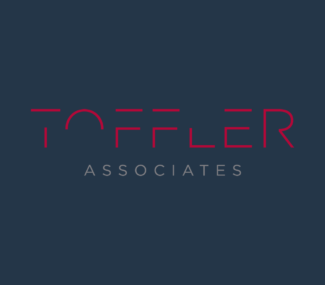The Risk of Neglecting Human Value in the Innovation Solution

“If you don’t understand people, you don’t understand business.”
– Simon Sinek
___________
Search “technology” or “innovation” or “computer” and “founded/er, ” and you’ll come up with lists of people who have launched tech companies. You might find lists dedicated to women, all non-U.S. born innovators, or non-tech people who started companies. You aren’t going to find a single story of an organization created, funded, launched, and nurtured by a computer. That’s because, for all the things that technology can do for us, it can not replicate the value and power of human judgment, instinct, or empathy that are so vital to the health of our workforce, our organizations, and our global marketplace.
Simon Sinek is famous for saying that, “100% of customers are people. 100% of employees are people. If you don’t understand people, you don’t understand business.”[1] We are drifting dangerously into a future of work that has forgotten or devalued the role of humans. Already, we are seeing businesses and public sector organizations turning their focus to technology solutions to work around or solve challenges.
Acquiring technology like case management platforms, security inventory systems, or data management solutions is a vital part of solving the complex problems that modern organizations face. It may be expensive, but it’s easy. These innovations are so numerous that they are reaching commodity status. This isn’t to say that we are expecting off-the-shelf packaged technology to meet our greatest challenges, but we’re naturally drawn to seek a linear solution to difficulties, and the marketplace exists. As these solutions become more prolific, so does our struggle to sustain a systematic approach to problem-solving.
It’s true that technology solutions like AI, cognitive learning, and technology dashboards continue to improve our ability to input questions and generate data. They help us to parse information rapidly and erase friction in the data-to-decisions process. They create outputs that (in the absence of human decision makers) could serve as directives. But allowing ourselves to see these technologies as sufficient is potentially dangerous to the future of our business and federal organizations.
We have discussed the importance of a design thinking approach in determining which solutions will be put to the best use and generate the best outcomes. What this reminds us is that technology itself is not a panacea. Without the unpredictable attitudes, intuitions, and insights of the people who engage with the solutions, we put the cohesiveness of the organization and the breadth of impact of the decisions at risk.
Intelligence Without Instincts Won’t Produce Actionable Wisdom
In the gleaming presence of technology innovations like IBM Watson, which is integrated more and more widely on the promise of improving collaboration between humankind and machines through its ability to answer questions posed in natural language, we are allowing the pendulum to swing too far toward technology and too far away from people. We need to remember that Watson can customize and segment data. It can process natural language. But it can’t apply it to humans or make up for the fact that people are inherently unpredictable and valuable contributors to a solution.
An excellent case in point is the U.S. Air Force “Loyal Wingman” initiative, which is developing algorithms that enable fighter pilots in manned, fifth-generation stealth fighters to control armed drones from inside their cockpit.[2] Ostensibly, the solution will boost the lethality of in air combat by expanding the capability and range of command for pilots and their aircraft, so they are better able to perform a mission. Drones are one innovation in a long history of developments created to secure and enhance the role of the soldier. We see evidence going all the way back to the opening sections of the U.S. Navy’s 1944 War Instructions, which states “The human element is a combination of instincts plus intelligence.” [3]
There’s tremendous risk in forgetting that instinct is the counterpart to intelligence. The biological value of the human is conversational, ideological, and emotional. Technology (on its own) continues to miss the mark on such powerful, fluid contributions, and it’s unlikely that we ever will be able to teach these abilities to a computer.
Rethinking Bio-Digital Convergence and Bifurcation in the Organization
Despite the incredible amount of progress that has already taken place, we still are in the early phase of uncovering lasting opportunities in these larger forms of bio-digital convergence. But we do see for certain is that the future of work depends on how successfully businesses and public sector organizations keep the people they employ and the people they serve at the center of pursuit for solutions and progress.
What we’re arguing is a hopeful proposition. Will organizations need to address how to integrate solutions and people? Yes. Will human behaviors continue to be dynamic and unpredictable? Yes. But do these truths create high barriers to nurturing an organizational structure capable of tapping into the particular strengths of each? No.
If we assume that technology is a part of a total solution and that human judgment plays a vital role, we will have the balance necessary to bolster the organization as a whole to make decisions and solve complex, dynamic challenges.
It’s time to pursue balanced solutions to right questions, rather than looking for answers in shiny technology innovations that promise to do the impossible – replace human value.
{{cta(‘bc9ba0a2-ec02-401a-8b7c-a568db3188ce’)}}
[1] Simon Sinek, Start With Why
[2] 2018: The Year Fighter Pilots Could Get Drone Wingmen, David Axe, April 2016; Loyal Wingman Program Seeks to Realize Benefits of Advancements in Autonomy, Mark Pomerleau, October 2016
[3] War Instructions: United States Navy, 19448 {Emphasis added}
- Categories
- Leadership
- Workforce of the Future


 About the Authors
About the Authors